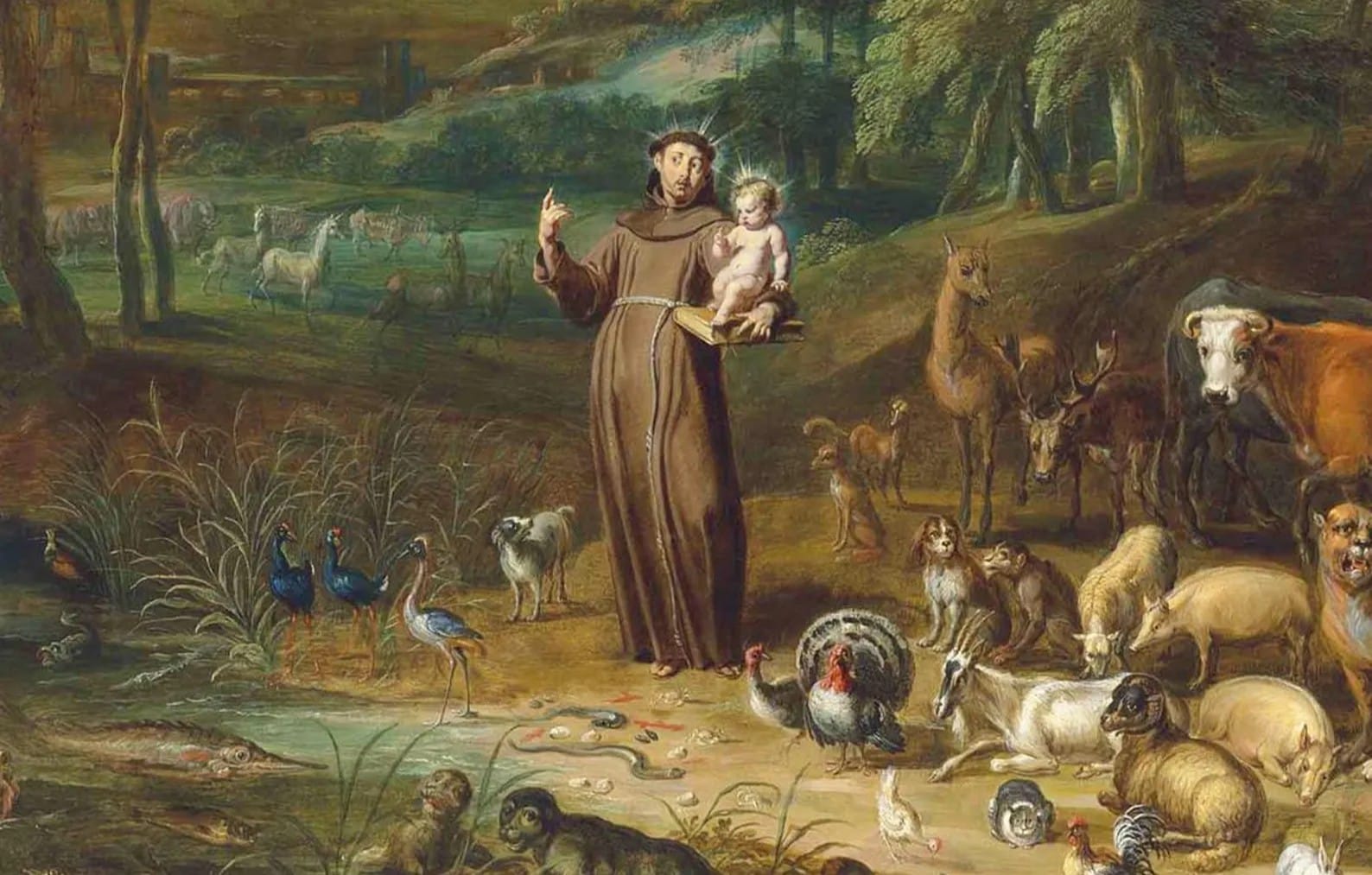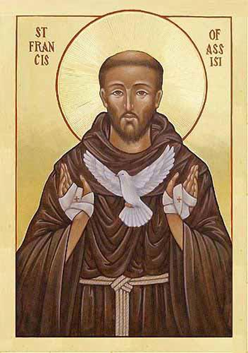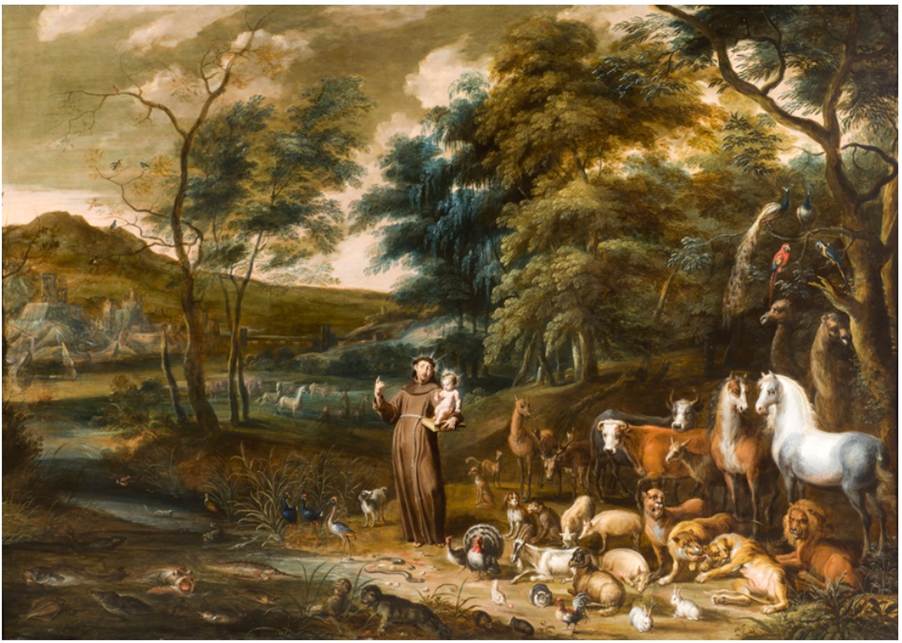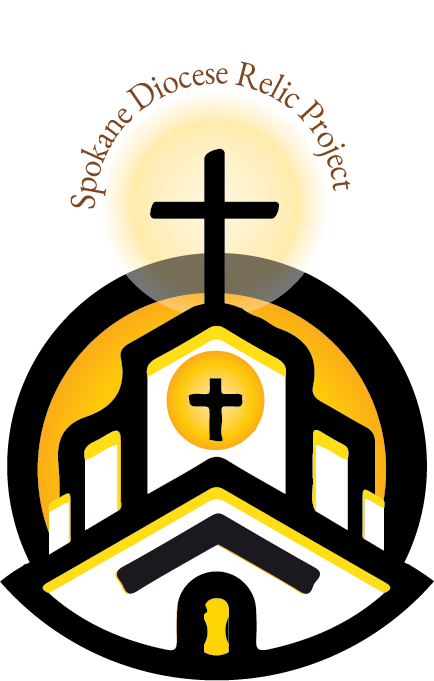St Francis of Assisi: Life, Legacy, and Relics

October 4th marks the Feast Day of St Francis of Assisi, the patron saint of poor people, animals, peace, merchants, stowaways, ecology, and Italy, to name a few.

Francis was born in Assisi, Italy, in 1181. He was first named John (Giovanni), but his father started to call him Francis, meaning ‘free man’, after bailing him out of prison. The name also means ‘Frenchman’. The Golden Legend and other hagiographic sources claim it was to call attention to a miracle, because legend has it, he miraculously received the ability to speak in the French language. Those who speak French know that the language holds a natural truthfulness; unlike in English, even a practiced liar can be swiftly rendered transparent. St Francis’s virtuosity in speech made his moral orders like an “axe that chopped out vices”.
Though patron of the poor, Francis’s life did not spring from humble beginnings. Born to a wealthy family, his father was a prosperous silk merchant, and his mother was a French noblewoman. As a teenager indulged by his parents, Francis often attended lavish parties and dined with friends, which gained him popularity in Assisi. He was known for his charming wit and flamboyance and would don fine and ornate clothes. Saint Bonaventure writes of him in Legenda Maior as having “excelled his companions in frivolity and the sport of youth.” His father insisted that Francis run his own business, so he was educated in commerce and dealt among the merchants of the town square. However, young Francis, like many young men in medieval Europe, longed to wear armour and prove himself a knight.

Francis joined the Assisian soldiers in a military expedition against Perugia in 1202, and, facing defeat, they were captured and flung into prison. He served there for a year, over the course of which he deliberated tirelessly on his vocation, recognising that the trivialities of his former passions profited him nothing.
Upon returning to Assisi, Francis was struck by a long illness and bedridden. Chained now in the prison of his body, wealth became as nothing to him. Assuming his previous role as a merchant, he would secretly hand out his father’s cash and garments to beggars who came across his stand, relinquishing them in charity. This stirred the dismay of his friends and the wrath of his father, who chastised him harshly. Yet Francis did not falter; in time he came to envy the beggars he served, for they seemed untouched by the corrupting burdens of wealth. When asked by a friend if he was thinking of marrying, he replied, "Yes, a fairer bride than any of you have ever seen", meaning his "Lady Poverty". On a journey of devotion to Rome, Francis dressed in rags and sat with the beggars at the doors of St. Peter’s Basilica, snatching hungrily at food as one of their own. He would have done so more often, but was dissuaded as it embarrassed those who knew him.

In 1207, Francis’s father sued him for giving away his money to the poor. The men of the town crowded the courtroom, the bishop among them, and when Francis was summoned to speak, he renounced his patronage. He declared that his only true Father was God in Heaven and spurned the last of his father’s coins still in his keeping. Some accounts even describe him as having torn off his clothes, after which the onlooking bishop, moved by his devotion, gave his own cloak to cover him. “To the servants of God,” he would later claim, “money is nothing but the devil and a poisonous snake”.

Francis came to the derelict church of Saint Damiano, outside Assisi. Within the broken walls, he knelt in prayer, when suddenly the statue of the crucified Jesus before him spoke to him, saying, “Francis, go and repair my house, because, as you see, it has fallen into ruins.” From that moment, his soul seemed to melt within him, and with burning zeal, Francis set himself to the work of rebuilding the church. At first, he took the command to mean the little church of San Damiano, but in time he came to see it as the greater call to revive Christ’s Holy Church.

One day, hearing in the Gospel the words of Christ to his disciples as he sent them forth to preach (Luke 9:2–3), Francis rose at once. He cast off his garments in exchange for a single robe, and his leather belt for a cord of rope. Inspired by his fervent example, men and women of both noble and humble birth put away the world’s vanities and followed him. Like a father, he taught his companions to seek evangelical perfection, embrace poverty, and walk in holy simplicity. And so, the Friars Minor was born.
Francis and his friars went to Rome to seek Pope Innocent III’s approval for their order. The Pope hesitated, for never before had there been a brotherhood so bound to holy poverty and so resolute in rejecting wealth: a way of life that seemed to run against the very currents of the age. After days of discernment, he saw Francis in a dream, alone holding the foundations of a church collapsing under its weight. Immediately, he accepted.

Today, there are over 650,000 Franciscans, men and women, who follow St Francis’s example. Within the monastic organisation, Francis always strived to remain second-in-command, seeking the humility of service despite his followers’ insistence. He preferred to be reviled than be praised, and whenever men extolled his sanctity, he would order a friar to assail him with abusive epithets. He also refused to be ordained a priest, for he judged himself unworthy of so great a charge, and revered the hands of priests, who by their craft were able to administer the Blessed Sacrament. He often said: “If I happened to meet at the same time a saint coming down from heaven and some poor little priest, I would hurry first to kiss the priest’s hands and would say to the saint: ‘Wait for me, Saint Laurence, because this man’s hands have handled the Word of Life and possess something beyond the human.”

In his lifetime, he was known for his many miracles. He was the first saint to receive the stigmata, imparted to him in a seraphic vision while he was meditating on the Passion of Christ. He received it with deep gratitude, seeing it as a share in Christ’s suffering and the redemptive power of the Crucifixion, but would hide it from his fellow friars so as to not draw attention to himself.
Francis’s love of nature deeply moved those around him. He saw the dependence of everything in existence on the providence of God. He would often speak to animals, calling them his brother and sister, for he recognised their collective fraternity as created beings of God. He once came upon a large flock of birds, and, as if they were rational creatures, he said: “My brother birds, you owe a great debt of praise to your Creator, who clothes you with feathers, gives you wings to fly with, and without effort on your part, he sustains you.” He walked through the flock, and his cloak touched them, but not one of them moved, until, permission given, they all flew away at once. He composed a religious song, Canticle of the Sun, expressing this theology. This inspired the widely sung hymn “All Creatures of Our God and King" by William H. Draper (1919).

Finally, Francis was suffering from a long illness and knew that his last days were at hand. On the night of October 3rd, 1226, he lay on the bare ground, arms outstretched in cruciform, so as to assume himself into the Earth; from dust to dust. He placed his hands on his friars, blessed them, and distributed to each a morsel of bread in the manner of the Lord’s Supper. True to his custom, he invited all creatures to praise God, even exhorting death itself, terrible and hated by all, to join in praise. He met death joyfully, saying, “Welcome, my sister Death!” His last hour came, and he passed from earthly life into eternal life; his Transitus.
The relics of St. Francis are venerated across the world, though the heart of his memory still beats in Assisi. His tomb rests in the crypt of the Basilica of St. Francis, where the greater part of his body lies enshrined. Nearby, in the Basilica of St. Clare, a tunic and other simple belongings are preserved, safeguarded by the sisters who once followed him. The Sacred Convent of Assisi keeps his breviary and manuscripts, traces of the saint’s daily devotion, while San Francesco a Ripa in Rome holds relics from his journeys to the city. On Mount La Verna, where he received the stigmata, the sanctuary guards relics bound to that holy vision. Fragments of his garments are housed in the Lateran Basilica, San Rufino Cathedral, and Santa Maria degli Angeli, the Porziuncola where he first gathered his brotherhood. Over centuries, smaller relics such as bone, hair, and humble possessions have been dispersed to Franciscan houses throughout the world, carrying with them the living echo of his sanctity.


